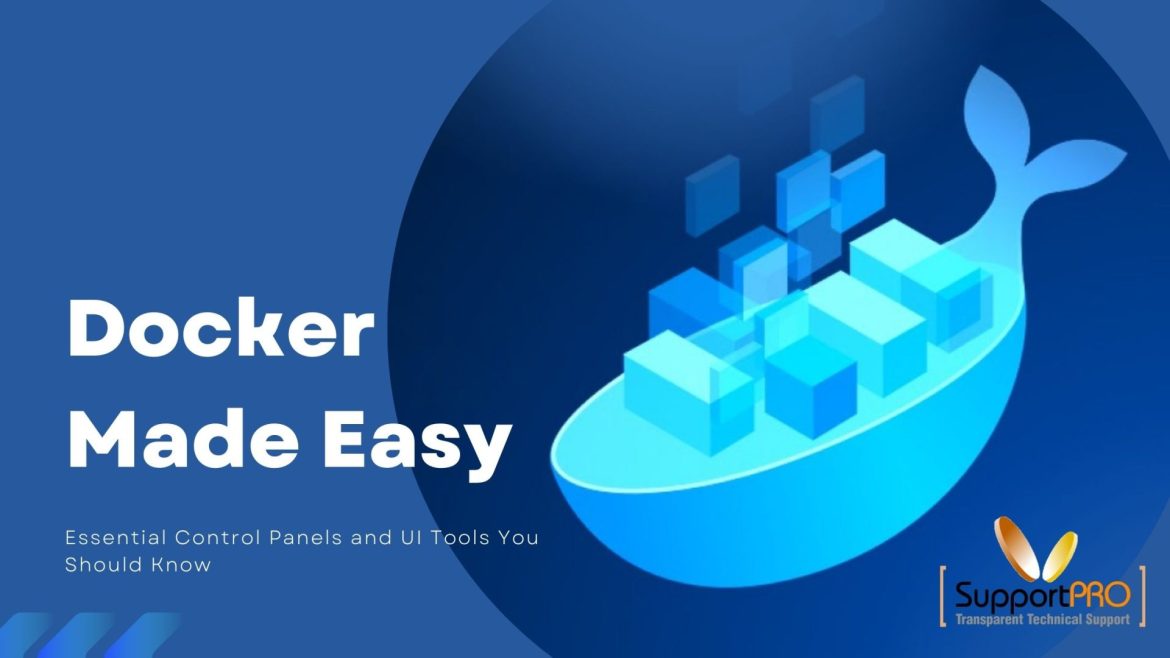If you’ve ever spent time working with Docker, you know the command line is powerful but not always fun. Typing out long commands, switching between logs, and trying to keep track of multiple containers quickly turns into a chore. That’s why a lot of people (myself included) eventually look for something friendlier, and that’s where Docker control panels come in.
Think of them as dashboards for your containers. Instead of juggling everything through the CLI, you get a clean, visual interface where you can launch apps, check performance, manage storage, or even keep an eye on security.
Why Even Bother with a Dashboard?
Docker itself is fine. It’s flexible, reliable, and works everywhere. But it wasn’t designed to be “user-friendly” in the way a modern dashboard is. A control panel makes the day-to-day work smoother. You don’t need to memorize dozens of commands. You can see how much CPU or memory your app is chewing up. Teams can work together without stepping on each other’s toes. And in many cases, you can deploy entire stacks or services with a couple of clicks.
It’s not about replacing Docker. It’s about making Docker easier to live with.
What Features Actually Matter?
Different dashboards focus on different things, but a few must-haves are pretty universal. At the very least, you’ll want:
- A simple way to start, stop, and restart containers.
- Logs you can view without digging through the terminal.
- Some kind of resource monitoring (CPU, memory, network).
- Decent support for volumes and networking.
If you’re working with a team, user roles and permissions help. If you’re scaling, support for Swarm or Kubernetes is worth having. And if you care about safety (which you should), SSL, image scanning, or security policies are a big plus.
Popular Control Panels in 2025
Here’s a quick look at the tools people are leaning on this year.
Portainer
Portainer is usually the first name that comes up. It’s straightforward, doesn’t feel bloated, and works with Docker, Swarm, and even Kubernetes. The interface is tidy, resource monitoring is built in, and it has proper role-based access control. It’s probably the best “default” option if you’re not sure where to start.
Rancher
Rancher is heavier, but that’s by design. It’s aimed more at teams and enterprises. It shines when you’re managing Kubernetes clusters, though it still handles Docker. Rancher brings in extras like CI/CD pipelines, detailed RBAC, and strict security controls. If you’re running big infrastructure or planning to move beyond Docker into Kubernetes, Rancher is worth considering.
Dockge
A newer name on the scene. Dockge is lightweight, simple, and very Compose-focused. Here you can manage multiple Docker-cmpose projects on a single dashboard, further group them, and also check logs with ease. It is good for developers as it ia both simple and still serves as a central place to keep things osed.
CapRover
CapRover takes a slightly different approach. It feels like a mini PaaS sitting on top of Docker. You can deploy apps with one click, grab free SSL certificates, and even push code directly through Git. For anyone who wants something like Heroku but self-hosted, CapRover scratches that itch.
LazyDocker
LazyDocker isn’t really a “dashboard” in the traditional sense. It’s a terminal UI — which means it still runs in the command line, but gives you a visual way to interact with your containers and services. It’s lightweight, portable, and perfect for people who love the terminal but want just a little more structure.
A Quick Snapshot
Here’s the short version if you don’t want to scroll back:
- Portainer – best all-rounder, works for most people.
- Rancher – aimed at enterprises and Kubernetes users.
- Dockge – great for docker-compose projects.
- CapRover – one-click app deployments, PaaS-like feel.
- LazyDocker – for CLI fans who want a visual edge.
Wrapping It Up
At the end of the day, Docker works just fine on its own, but managing containers gets old fast without some help. A control panel doesn’t just save you time but it also reduces mistakes and gives you visibility that’s tough to get through raw commands.
For me, Portainer is usually the safe pick. If you’re already in the enterprise space, Rancher will give you more muscle. Developers who stick with Compose might enjoy Dockge, while CapRover is perfect if you just want to push apps live without much effort. Further, LazyDocker is your choice if you prefer not using terminal.
No matter what you choose, critical factor is having the right support behind to make things smoother. Whether it be a quick guidance for container basics, hands-on help with scaling, or full enterprise-grade assistance, we have tailored options to match your needs.
So instead of figuring it all out alone, you can lean on us with confidence and focus on building your projects, knowing you’ll always have SupportPRO expert help at the right time.
If you need some help with Docker based control panels, Don’t hesitate to reach out – we’re here to assist you every step of the way!!!
Partner with SupportPRO for 24/7 proactive cloud support that keeps your business secure, scalable, and ahead of the curve.






